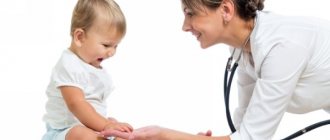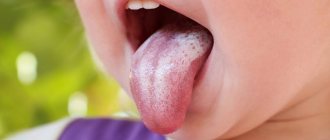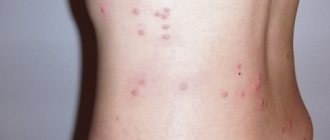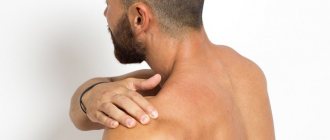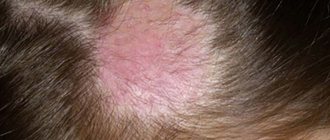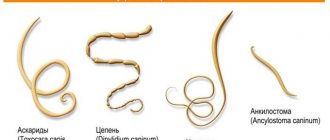09/07/2019 256 Gastroenterology
Author: Elena
Disorders of the intestinal microflora can very often be detected even in a newborn child. Therefore, dysbiosis in children, its symptoms and treatment are of concern to every parent. By consulting a doctor in time, it is possible not only to successfully cure this disease, but also to prevent its occurrence in the future.
[Hide]
Causes and risk factors
Dysbacteriosis refers to polyetiological disorders, the development of which can be facilitated by both exogenous and endogenous causes.
Risk factors for dysbiosis in newborns and infants include:
- the presence of infectious and inflammatory diseases of the urogenital tract in a pregnant woman;
- complicated course of pregnancy and/or childbirth;
- prematurity of the child;
- late latching of the baby to the breast;
- poor nutrition of the mother during breastfeeding;
- mastitis in a nursing mother;
- early transfer of the child to artificial feeding;
- improper child care.
Dysbacteriosis in children of the first year of life, as a rule, does not require treatment. The best way to normalize the balance of intestinal microflora in this case is natural feeding.
In older children, the following factors contribute to the development of dysbiosis:
- diathesis;
- frequent acute respiratory viral infections;
- helminthic infestations;
- diseases of the gastrointestinal tract;
- unbalanced diet (with a predominance of carbohydrates and animal proteins in the diet);
- long-term treatment with antibacterial drugs;
- allergies;
- anemia;
- changes in hormonal levels;
- exposure to adverse environmental factors on the body;
- stressful situations;
- surgical interventions;
- malignant neoplasms.
The role of nutrition in the development of dysbiosis
A child’s diet is of great importance for the prevention and treatment of dysbiosis. There are food groups that are natural sources of prebiotics that must be regularly included in the menu to maintain a normal balance of microorganisms. If a child receives a balanced, healthy diet every day, the composition of the intestinal microflora can be adjusted without the use of medications.
Symptoms of intestinal dysbiosis in children
Dairy products with added starter
The most useful product for children with impaired intestinal microflora is kefir. Kefir mushroom contains several strains of beneficial lacto- and bifidobacteria and has a whole list of beneficial properties, for example:
- promotes the growth of your own beneficial intestinal microflora;
- normalizes stool (eliminates constipation);
- reduces the formation of gases in the intestines, helps fight flatulence and bloating;
- strengthens the immune system;
- removes toxins and allergens from the body.
The importance of intestinal microflora
You can introduce kefir into a child’s diet from 7-8 months. To feed young children, it is better to use special children's kefir, sold in baby food departments. The norm for children from 8 months to 3 years is 100-120 ml per day. After 3 years, a child can be given 150-180 ml of kefir before bed every day.
If a child refuses to drink kefir, you can replace it with natural yogurt, which does not contain flavoring or coloring additives. The shelf life of such a product should not exceed 7-10 days.
Important! Fermented milk products must be temporarily excluded from the children's diet if there is a suspicion of candidiasis (thrush) of any localization.
Fresh and vegetables fruits
Fruits and vegetables should be included in the menu of children of any age. They not only contain natural prebiotic cultures, but are also a valuable source of plant fiber, which removes all toxins and allergens from the intestines and creates optimal conditions for the growth of its own beneficial flora. In addition, fruits are leaders in the content of vitamins necessary to maintain healthy intestinal function and the formation of children's immunity.
Natural Probiotics
The greatest amount of prebiotic fibers is found in the following fruits:
- oranges;
- lemons;
- a pineapple;
- bananas;
- tomatoes;
- avocado.
Infants need to add vegetables and fruits to their menu from 4-6 months. Up to a year they are given in the form of a homogenized (homogeneous) puree. The need for vegetables and fruits for older children is about 500 g per day.
Causes of intestinal microflora imbalance
Cereals
A large number of prebiotics are found in some grains: barley, rye, wheat, oats. Only whole grains are useful for feeding children of any age: ready-made breakfast cereals and instant cereals contain practically no dietary fiber and beneficial bacteria, and have no nutritional value for the child’s body.
The ideal option for preparing cereals is milk porridge with the addition of pieces of fruit or honey.
Non-drug treatment of dysbiosis
Bee products
Honey, bee bread, propolis, royal jelly - all these products are a real natural cure for intestinal dysbiosis. To restore intestinal function, it is enough to eat 1 teaspoon of honey per day (for children from 3 to 5 years old, this norm is half a spoon per day). Regular consumption of honey eliminates intestinal spasms, normalizes gastric and intestinal motility, and suppresses the growth of pathogenic flora in the lumen of the large and small intestines.
Diet for intestinal dysbiosis
To ensure that honey consumption only benefits the body, it is important to follow certain rules:
- do not exceed the recommended daily dosage, since honey contains a lot of sugar and has a high calorie content;
- It is forbidden to give honey to children with diabetes and increased body weight;
- honey should be consumed fresh, washed down with tea, but not stirred into the drink - high temperatures destroy the vitamins and prebiotic fibers contained in the product.
Note ! Giving honey and other bee products to children under 3 years of age is not recommended due to the high risk of allergies.
Video - Why does dysbiosis occur and how to treat it?
https://youtu.be/YLZxlD6NNE4
Forms of dysbiosis in children
Depending on the predominance of one or another opportunistic microflora, dysbiosis in children can be of the following types:
- candida;
- staphylococcal;
- Proteaceae;
- associated.
According to the clinical course, the pathological process can be latent, i.e. hidden, local, i.e. local or generalized, i.e. widespread.
Depending on the species and quantitative composition of the microflora, four degrees of dysbiosis in children are determined.
- The predominance of anaerobic microorganisms, the number of bifidobacteria more than 107-108 CFU (colony-forming units) in 1 g of feces, no more than two types of opportunistic microorganisms in the amount of 102-104 CFU in 1 g of feces.
- An equal amount of aerobic and anaerobic microflora, an increase in the concentration of lactose-negative and hemolytic Escherichia coli, the number of opportunistic microorganisms is 106-107 CFU per 1 g of feces.
- The predominance of aerobic microflora up to the complete absence of lacto- and bifidobacteria, a significant increase in the number of opportunistic microorganisms.
- Associated dysbacteriosis; absolute predominance of opportunistic microflora, which becomes resistant to most antibacterial drugs.
Equally important, or rather, primary importance in the treatment of dysbiosis is given to diet.
According to clinical and bacteriological indicators, dysbiosis in children can be compensated (corresponding to degrees I-II), subcompensated (corresponding to degrees II-III) and decompensated (corresponding to degrees III-IV).
Prevention
- Healthy lifestyle.
- Alternation of active and passive rest.
- Proper nutrition.
- Maintaining a daily routine.
- No stressful situations.
- Strengthening the immune system through hardening and physical exercise.
- Taking probiotics if antibiotics are prescribed.
- Timely treatment of chronic pathologies, especially if it concerns the digestive organs.
- Prevention of colds and intestinal diseases.
https://youtu.be/nTBBWbRAxvg
Now you know what treatment of intestinal dysbiosis in children is. Remember to follow simple rules to maintain a balance of beneficial microorganisms and prevent the growth of pathogenic ones. Do not forget, when the first symptoms of dysbiosis occur, immediately consult a doctor for diagnosis and adequate therapy.
Symptoms of dysbiosis in children
Compensated dysbiosis in children, as a rule, occurs without any obvious clinical signs and is detected during an examination for another reason.
At the subcompensation stage, infants experience frequent regurgitation, vomiting, loss of appetite, rumbling in the stomach, flatulence, and spasms along the intestines. The child is not gaining weight well, is restless, irritable, and has trouble sleeping. The stools are usually copious, liquid or mushy in consistency, foamy, and contain an admixture of mucus. The feces are white or greenish in color, with a putrid or sour odor. Children with dysbiosis may experience an increase in the amount of fatty components in feces (steatorrhea), protein-energy deficiency, polyhypovitaminosis, anemia, and delayed physical development. The processes of fermentation and putrefaction occurring in the intestines lead to autoallergization with symptoms of urticaria and atopic dermatitis.
Among the signs of dysbiosis in an older child are increased salivation, bad breath, frequent belching, heartburn, intestinal colic, excessive gas formation, pain in the upper abdomen, a feeling of fullness in the stomach after eating, as well as diarrhea, constipation or their alternation, with In this case, the patient's stool has uneven coloration. Children experience seizures in the corners of the mouth, bleeding gums, acne, furunculosis, brittle hair and nails, dry skin, headaches, irritability, weakness and fatigue. A generalized form of dysbacteriosis in children (especially against the background of immunodeficiency) can manifest itself as glossitis, cheilitis, balanoposthitis or vulvitis, smooth skin candidiasis, visceral candidiasis.
According to various studies, a violation of the intestinal biocenosis is detected in 25–50% of healthy children in the first year of life.
In severe cases, a child with dysbacteriosis has increased body temperature, chills, cramping abdominal pain (mainly in the afternoon), nausea, and diarrhea.
Main manifestations of stage 2 disease
In the intestine at this stage, the quantitative composition of beneficial microorganisms significantly decreases, and the development of pathogenic flora occurs much more actively. Dysbacteriosis of the 2nd degree is manifested by the following symptoms:
- there is an active development of anemia, manifested by loss of strength, chronic lack of sleep, a lack of calcium, and signs of vitamin deficiency;
- allergies that affect the skin are possible;
- signs of enteritis appear, accompanied by severe flatulence, diarrhea, a feeling of fullness and soreness of the intestines;
- the surface of the tongue becomes covered with plaque, which accumulates again immediately after removal;
- Appetite disappears completely and a feeling of heaviness appears, forcing the patient to lie down.
These signs are characteristic only for this stage of the disease, and it is impossible to confuse them with 3 or 1 degrees of dysbacteriosis.
Diagnostics
A pediatrician and pediatric gastroenterologist are involved in the diagnosis, and a laboratory test for dysbacteriosis in children is required.
During physical diagnosis, the condition of the skin and mucous membranes is assessed, pain along the intestine during palpation, and bloating are determined.
Laboratory diagnosis of dysbiosis consists of conducting a biochemical and/or bacteriological analysis for dysbiosis in children (examination of stool, bile). Microbiological criteria are a decrease in the number of lacto- and bifidobacteria, a decrease or increase in the concentration of typical Escherichia coli, an increase in the number of microscopic fungi, cocci, and clostridia.
To determine the etiological factor, you may need an ultrasound examination of the abdominal organs, gastroscopy, colonoscopy, laboratory testing of stool for Giardia, worm eggs, coprogram, and biochemical blood test.
Differential diagnosis is carried out with malabsorption syndrome, nonspecific ulcerative colitis, acute intestinal infections.
https://youtu.be/MoPv2ghoVb8
Etiology
With intestinal dysbiosis, the qualitative and quantitative composition of the microflora changes - the number of opportunistic bacteria prevails over the concentration of the normal set of microbiome.
Normally, the child’s intestinal microflora includes:
- bifidobacteria (90%) - act as the most important flora;
- accompanying microorganisms (8–10%) - this category includes lactobacilli, enterococci and non-pathogenic Escherichia coli;
- opportunistic bacteria (less than 1%) - the group includes Proteus and Enterobacteriaceae, non-pathogenic staphylococci and yeast-like fungi, Klebsiella and cytobacteria.
In small concentrations, opportunistic microorganisms do not pose a threat, but under the influence of favorable sources their numbers increase significantly, causing the bacteria to become pathogenic.
The causes of dysbiosis may differ slightly depending on the age category of the child. For example, intestinal dysbiosis in an infant can be triggered by the following factors:
- poor nutrition of the mother if the newborn is breastfed;
- later the baby's first breastfeeding;
- mother or child taking antibacterial drugs;
- sudden cessation of breastfeeding;
- incorrect or early introduction of complementary foods;
- congenital gastrointestinal dysfunction;
- frequent changes of milk formula during artificial feeding;
- increased sensitivity to milk proteins;
- primary enzyme deficiency;
- previous intestinal infections;
- gastritis and intestinal atony;
- mastitis in a nursing mother;
- the birth of a baby ahead of schedule;
- atopic diathesis or other allergic pathologies.
The appearance of the disorder in children 3 years of age and older, up to school age, is provoked by a number of the following reasons:
- poor nutrition that is not suitable for the child’s age;
- presence in the medical history of chronic diseases of the digestive system;
- frequent exposure to colds or viral infections;
- long-term treatment with hormonal substances or antibiotics;
- immunodeficiency states;
- helminthic or parasitic infestations;
- long-term influence of stressful situations;
- previous gastrointestinal surgery;
- vegetative-vascular dystonia;
- hormonal imbalance;
- chronic constipation;
- diabetes;
- problems with the liver or gall bladder;
- the body's tendency to allergic reactions;
- the occurrence of enteritis or colitis;
- influence of unfavorable environmental conditions.
It must be taken into account that with changes in the intestinal microbiome, the functions for which the normal microflora is responsible are disrupted. Thus, dysbiosis leads to the following disorders:
- disorder of digestive processes, regulatory mechanisms of metabolism, neutralization of nitrates, chemicals and drugs;
- slowing down the synthesis of enzymes and hormone-like substances;
- problems with the absorption of vitamin D and many microelements beneficial to the body (copper, magnesium, potassium, calcium, iron, sodium, phosphorus, zinc);
- decreased local and general immunity;
- the inability to protect the child’s body from pathogens that can cause an infectious process.
Intestinal dysbiosis in infants and children of any age category in most situations acts as a secondary disorder.
Treatment of dysbiosis in children
Dysbacteriosis in children of the first year of life, as a rule, does not require treatment. The best way to normalize the balance of intestinal microflora in this case is natural feeding.
Effective treatment of dysbiosis in children, first of all, requires eliminating the cause of the development of the pathological process.
Colostrum and breast milk contain immune factors that prevent colonization of the intestine by opportunistic microflora. Therefore, it is important to put your newborn to the breast in the first two hours after birth.
In order to normalize the intestinal biocenosis, probiotics (contain monocultures of beneficial microorganisms or combinations thereof), prebiotics (promote the growth and reproduction of representatives of normal intestinal microflora), symbiotics (combined preparations combining pro- and prebiotics), bacteriophages (lyse pathogenic microorganisms) are usually prescribed. In some cases, antibiotic therapy may be necessary.
Source: e-torg.info
In case of severe digestive disorders, enzymes are prescribed; in case of intoxication, sorbents can be used (it should be borne in mind that they are taken separately from all other drugs). Vitamin therapy is recommended for frequently ill children. Antimycotic drugs are used to treat severe candidiasis dysbiosis in children.
The value of healthy intestinal microflora
Beneficial intestinal microflora
- Microorganisms actively take part in digestion.
- Promotes easy absorption of vitamin D and microelements.
- Synthesizes enzymes necessary for the digestion of food, as well as hormone-like substances
- Responsible for the synthesis of vitamins, in particular biotin, folic and ascorbic acid, vitamin B.
- Take an active part in metabolic mechanisms,
- Resists pathogenic microorganisms.
- Affect the normal movement of food masses and bowel movements.
- Responsible for neutralizing nitrates.
- Actively influence the formation of immunity.
Normal composition
In order for the intestinal microflora to cope with the assigned tasks, it is necessary that there is a constant ratio of beneficial bacteria, namely:
- bifidobacteria should occupy 90%;
- up to 10% are enterococci, lactobacilli and E. coli, which are non-pathogenic;
- in very small quantities, less than a percent, are opportunistic bacteria, namely: Proteus, Enterobacter, yeast-like fungi, Citrobacter, Klebsiella, non-pathogenic Staphylococcus.
Diet for dysbiosis in children
Equally important, or rather, primary importance in the treatment of dysbiosis is given to diet. Fermented milk products are introduced into the diet of mixed-fed children. For older children, the content of carbohydrates and animal proteins in the diet is limited; the diet includes dairy products enriched with biocultures, as well as foods rich in fiber. Stimulation of the growth of normal intestinal microflora is facilitated by corn, all types of cabbage, zucchini, carrots, fresh fruits and juices from them, nuts, bran, oatmeal, buckwheat porridge, wholemeal products.
If you have constipation, you should exclude white bread and all rich pastries, rice, pasta, chocolate, and cocoa from your diet. For diarrhea, pureed porridges and vegetable soups, white bread crackers, infusions and decoctions of black currants, blueberries, dogwoods, and jelly are recommended.
Folk remedies
There are many recipes for folk remedies for the treatment of dysbiosis, but not all of them are suitable for children. For example, children may categorically refuse to use herbal infusions. For children, you can use special folk remedies with a pleasant taste. Some healthy dishes are recommended to be included in the children's menu to prevent abnormalities in the intestinal microflora and reduce immunity.
Kefir drink with dried fruits:
- Prepare several types of dried fruits (dried apricots, prunes, figs).
- Pour hot water over the preparation (the dried fruits should swell within an hour).
- Grind the dried fruits (you can simply cut them with a knife).
- Pour a tablespoon of the preparation into a glass of kefir and mix the drink thoroughly.
- For younger children, dried fruits can be crushed in a blender.
- It is recommended to drink the drink in the morning.
- The product not only improves the condition of the digestive system, but also improves immunity.
Elderberry and rosehip decoction:
- Combine 100 g of rose hips and elderberries.
- Pour the workpiece with hot water (600 ml).
- Boil the broth for twenty minutes over low heat.
- After filtering and cooling, the drink is ready to drink.
- The product can only be used for children over four years of age.
- The decoction should be consumed in small portions before main meals (three times a day).
Honey-banana paste:
- Mash half a banana with a fork.
- Mix the preparation with a teaspoon of honey.
- It is recommended to use the product for breakfast.
- The child must be excluded from an allergic reaction to honey.
Sweet paste made from seeds, figs and dried apricots:
- Combine pumpkin, sunflower, flax seeds, chopped dried apricots and figs in equal quantities.
- Grind the workpiece in a blender.
- The paste can be eaten with cookies or on its own.
- It is recommended to use this remedy before breakfast and dinner (a teaspoon).
Berry paste:
- Crush lingonberries, raspberries and cranberries (you can chop them in a blender).
- It is allowed to add sugar or honey to the preparation (to improve the taste).
- The product should be consumed after breakfast and dinner (a teaspoon).
Video on the topic: Intestinal dysbiosis, symptoms and treatment in children.
Possible complications and consequences
With decompensated dysbacteriosis, the child’s general condition suffers significantly due to constant diarrhea, vomiting, and intoxication of the body; this can lead to acute infectious diseases of the gastrointestinal tract, enterocolitis, bacteremia and sepsis.
In severe cases, a child with dysbacteriosis has increased body temperature, chills, cramping abdominal pain (mainly in the afternoon), nausea, and diarrhea.
With long-term intestinal dysbiosis, immunodeficiency develops, as a result of which the child becomes susceptible to infectious diseases.
What is dysbiosis
In the human gastrointestinal tract there is a microflora that plays an important role in the functioning of the body. It is formed from the moment of birth. These are gram-positive and anaerobic bacteria. They participate in the digestion of food, synthesize enzymes to improve digestion, help absorb microelements, protect the child’s body from various pathogens and block the proliferation of pathogenic flora. A healthy intestine is home to up to 500 species of beneficial microorganisms.
Balance in their ratio is vitally important. In normal condition, they protect the body from allergic reactions and support the immune system. With a balance of microorganisms, all processes occur in a balanced manner.
A change in the ratio of these microorganisms causes dysbiosis in children. Partial or complete death of beneficial microflora leads to an imbalance.
The proliferation of pathogenic bacteria in the body causes inflammatory reactions. The child's body weakens and becomes vulnerable to infections.
Almost always this disorder is a consequence of some phenomenon in the body. At the initial stage, the disease is easily treated with proper nutrition, but in the future it can lead to complications.
This condition is especially dangerous for infants. The consequences can be unpredictable and can lead to various serious diseases. You should immediately contact a medical facility.
Differences from 3rd degree
The main way to diagnose the type of disease is to take tests, in which the distinctive indicators are a noticeable decrease in the number of beneficial bacteria present and an excess in the number of pathogenic bacteria.
Symptoms that are absent in other types of disease help to determine grade 3 dysbiosis - chronic diarrhea and green stool. In addition, there is an increase in temperature and headaches that appear in the evening. The patient develops chills caused by severe intoxication.
Treatment method
Considering that the symptoms of the disease are similar for all ages, when choosing therapy, a single scheme is followed:
- all pathogenic microflora are destroyed;
- the number of beneficial intestinal bacteria increases;
- therapy is carried out to maintain an optimal balance of microflora;
- immunity is regulated and intestinal functionality is restored.
All stages of dysbiosis are treated by a gastroenterologist, who prescribes treatment after diagnosis.
Effective preventive measures to eliminate intestinal dysbiosis in children
Doctors strongly recommend such measures.
Correct attachment of the baby to the mother's breast
Correct postures for feeding - prevention of diseases in mother and child
The baby should be attached to the breast within the first thirty minutes after birth. Feeding should not be stopped even after the child reaches one year. Ideally, mother's milk serves as one of the main foodstuffs for up to one and a half years and even more.
Two days after the first feeding, the sterile environment of the intestine is exposed to microorganisms new to the child’s body. Colonization of the gastrointestinal tract by natural microflora begins. If this process is disrupted due to the colonization of the intestines by harmful bacteria, all conditions are created for the development of dysbiosis.
Doctors note a significant weight loss in the baby. Parents are worried about the frightening frequency of stool (emptying occurs literally after every meal).
Note. The following characteristic picture may indicate dysbacteriosis - the baby actively applies itself to the mother's nipple, but after that it unexpectedly shows nervousness, screams loudly, makes impulsive arches, and turns its head away from the breast. This is all the more strange since he is clearly hungry, but refuses milk.
Pathology is also indicated by frequent and painful constipation. Sometimes the baby cannot have a bowel movement at all without the help of an enema. Such constipation occurs due to poor digestion of breast milk.
Important! The chances of developing dysbiosis in a child increase significantly with late breastfeeding. Natural prevention of dysbiosis involves the obligatory attachment of a newborn to the mother’s breast literally immediately after birth. This also stimulates the flow of milk, and eliminates such a common problem as its deficiency in women in labor.
A pregnant woman taking the drug Lactusan
Since eliminating dysbiosis is a long and complex treatment process, preventive measures to prevent it should be taken in advance, preferably even during the period of pregnancy.
What does it mean?
Before the birth of the baby, the mother’s body intentionally increases the quantitative level of bifidumbacteria in the gastrointestinal tract that are beneficial for the child’s body.
Prevention should be aimed at preventing sterilization of microorganisms that are beneficial to the intestines.
This means that a woman is prohibited from taking a number of medications during pregnancy, including most antibacterial drugs. In addition, she should pay special attention to the regimen and quality of her diet, as well as the vitamin content of the foods she eats daily.
Pregnant women should consume the following amounts recommended by nutritionists:
- various juices and infusions;
- vegetables;
- fruits familiar to her area;
- forest and domestic berries that were not grown on nitrogen-containing fertilizers.
During pregnancy, women are not recommended to eat food that is poorly digestible and takes too much energy to digest.
It is best to completely avoid foods such as:
- fat meat;
- high-calorie pastries and cakes;
- all types of smoked meats;
- food dishes containing nitrates, including sausages and frankfurters;
- products containing some allergens, such as seafood, chocolate products, cocoa.
Important. Many chronic foci of infection in the body of a pregnant woman should be completely eliminated or their harmful effects significantly reduced than before.
This means:
- cure all teeth;
- eliminate inflammatory processes in the nasopharynx;
- diagnose the genitourinary and digestive systems and, if pathologies are detected in them, prescribe an effective course of treatment.
A pregnant woman should not overexert herself:
- physically;
- mentally;
- psychologically.
She benefits from many hours of walks in clean air. Remember that those at risk of birth injuries are primarily mothers with a compromised nervous system, who are not physically developed and who are often ill.
Drug therapy
In the treatment of dysbiosis, medicinal substances are used to relieve the symptoms of pathology and restore healthy microflora.
Complex treatment involves the use of drugs that differ in a specific area of responsibility:
- prebiotics;
- intestinal antiseptics;
- probiotics;
- bacteriophages.
To eliminate constipation or diarrhea, appropriate medications are prescribed.
Attention! The lack of beneficial microflora interferes with the absorption of vitamins by the intestines. To prevent manifestations of vitamin deficiency, additional vitamin complexes are provided.
Prebiotics
In the treatment of grade 2 dysbiosis, prebiotics are always used first, suppressing pathogenic microflora, strengthening the immune system and stimulating the formation of beneficial bacteria. In mild cases of the disease, they provide a quick and complete recovery.
- Duphalac. Kills pathogenic microorganisms, helping beneficial intestinal bacteria to grow. Effectively improving peristalsis, syrup facilitates bowel movements to the extent of dysbacteriosis, accompanied by constipation. The number of doses and the required dosage is selected by the gastroenterologist individually.
- Lactofiltrum. The drug, produced in tablets, helps to normalize the flora, with the simultaneous removal of toxins. Take three times a day before meals.
Probiotics
Due to the content of living bacteria, probiotics actively fight pathogenic bacteria. The drugs are:
- monocomponent;
- combined;
- multicomponent;
- synbiotics;
- antagonists.
Attention! The bacteria found in probiotics are foreign to the human body, so they are often rejected. Accordingly, the effectiveness of treatment of various stages of dysbiosis is low.
- Lactobacterin. Produced in suspension or tablets. The lactobacilli contained in it destroy pathogenic organisms, strengthen the immune system, and restore metabolic processes. When used twice a day, the drug must be washed down with milk.
- Bilactin. Dietary supplement (BAA) enriches the body with probiotic enterococci. When treating any degree of dysbiosis, three doses are prescribed during meals.
- Intestinal antiseptics. They are a type of antibiotic, so they are used with extreme caution. Their task is to suppress the development of pathogenic microflora.
- Enterofuril. The drug, produced in suspension or capsules, actively kills pathogenic bacteria. Particularly effective use is noted for diarrhea. The dosage should not exceed 800 milligrams per day.
- Intetrix. Actively participates in the treatment of any stage of dysbiosis due to antifungal and antimicrobial activity. Without damaging the intestinal flora, it effectively and quickly destroys pathogenic bacteria. Treatment is carried out for at least 10 days.
- Bacteriophages. These are viruses that can reproduce and destroy certain types of intestinal bacteria. Being absolutely safe for humans, the drugs have powerful antibacterial properties. Treatment with drugs is usually supplemented with antiseptics.
- Intensive bacteriophage. The prepared solution is taken orally or administered rectally. Effectively destroys dysentery bacillus, staphylococci, enterococci, salmonella, and grade 2 dysbacteriosis. Treatment should be carried out for at least 7 days.
- Streptococcal bacteriophage. The drug is aimed at destroying streptococcal bacteria. It is consumed three times a day, 30 ml per dose. You can alternate, replacing one of the techniques with an enema, which will require 40 ml of medication. The duration of treatment should not exceed 3 weeks.
Treatment
Therapy begins with a strict diet. Then replacement therapy is added to ensure normal digestion and stimulate the growth of its own beneficial microflora. Symptomatic therapy is also prescribed, which usually worries parents the most.
Diet
The basics of diet therapy depend primarily on the age of the child. The basic principles are based on the prohibition and recommendation of certain products:
| Recommended Products | Not Recommended Products |
|
|
Up to 1 year
When artificial feeding, it is necessary to change the formula. Fermented milk mixtures containing many beneficial bacteria are recommended.
Features of each degree
The science of microbiology divides bacteria into pathogenic and conditionally pathogenic for humans. Normally, they populate the intestines and are responsible for the normal functioning of the intestines and maintain internal balance. Under the influence of unfavorable environmental and internal factors, active proliferation of bacteria begins, causing dysbacteriosis. Symptoms vary depending on the severity.
1st degree
Mild dysbacteriosis can be treated independently, without the use of medications. With grade 1, a person does not always pay attention to minor changes in the body and attributes everything to hard work and stress. If the pathology is not detected at the initial stages, it quickly progresses to the next stage.
In the intestine, in the first degree of severity, normal microflora (bifidobacteria, lactobacilli) predominates. With poor nutrition, long-term use of antibacterial drugs, and reduced immunity, the growth of cocci and fungi begins. The person feels fine, but may experience short periods of constipation or diarrhea.
Dietary recommendations for mild dysbiosis:
- It is recommended to eat foods with a lot of fiber and dietary fiber. Homemade apples, tomatoes, and cabbage salads are suitable for treating dysbiosis.
- Dried fruits (prunes, dried apricots) and compotes made from them are useful.
- Eating legumes (beans, peas, lentils) will help combat dysbiosis.
- Replace fresh bread with rye bread. Exclude pastries, cakes, pastries.
- Porridge replenishes the supply of vitamins, helps normalize body weight, increases intestinal motility, and restores intestinal microflora. Eat more buckwheat, oatmeal, barley.
- Summer fruits (currants, grapes, peaches, bananas) replenish the supply of vitamins, microelements, and increase immunity.
- Fermented milk products: cottage cheese and milk are a source for bifidobacteria and lactobacilli.
- Fish and meat dishes should not be excluded from the diet.
- Don't forget to replenish your body with fluids. Mild dysbiosis is not accompanied by dehydration, but water helps intestinal function.
You can try to cure the first degree of dysbiosis with folk recipes. Effective ones include:
- take 1 tbsp. dry strawberry stalks, pour a glass of water. Place the solution on the stove and cook for 5-6 minutes. Leave to steep for a couple of hours. After the time has passed, strain the tincture and take a quarter glass;
- buy kumys, carrots, beets, cucumbers. Mix the ingredients in equal quantities. Place the mixture in the refrigerator, drink one glass per day. Course - 1 month. If you don't have kumys, take fermented baked milk.
- grate approximately 300 g of horseradish root. Pour in 1 liter of cold water. Take 1 tsp. twice a day;
- An effective recipe is a mixture of sunflower oil and dill seeds. Drink 1 tsp 3 times a day;
- Potentilla herb is used for gastrointestinal diseases;
- It is recommended to drink teas based on birch leaves, eucalyptus, and mint. Take 1 tbsp per glass of water. l herbs. Drink twice a day.
2nd degree
Dysbacteriosis of the second degree is characterized by an increase in aerobic intestinal flora. Opportunistic bacteria begin to actively multiply. The microbiological balance is disturbed. The second stage is manifested by the following symptoms:
- abdominal pain that occurs during meals;
- dyspeptic syndrome: loss of appetite, nausea, vomiting;
- feces become liquid, smelly, greenish in color;
- prolonged constipation may occur;
- A white coating appears on the tongue in the oral cavity. The mouth is a secondary site of pathology;
- A hives-like rash appears on the body.
The manifestation of such symptoms requires consultation with a doctor, a detailed examination, diagnosis, and correct determination of the cause and stage of the disease. Dysbacteriosis of 1st and 2nd degree can be treated at home. If severe signs of dehydration or unmotivated weakness appear, you should immediately go to the hospital. Patients diagnosed with second-degree dysbiosis are treated for several months. Colon dysfunction can be corrected with diet and medications. Main stages of treatment:
- Acipol, Bifikol, Bifidumbacterin promote the production of lactic acid, and the number of beneficial lactobacilli increases.
- To get rid of dysbiosis, you need to take probiotics. They contain living beneficial microorganisms.
- Multicomponent medications contain different types of bacteria: Linex, Bifikol, Bifiform.
- Monocomponent probiotics consist of one type of bacteria. The name corresponds to the type of microorganism: Bifidobacterin, Lactobacterin.
- Combined - contain live bacteria that are not sensitive to the action of antibiotics. Popular drugs of the group: Rioflora, Linex.
- Recombined are universal products that, in addition to bacteria, also contain special genes that synthesize Alpha Interferon. Bifiliz is a representative of the group, improvement is observed after a couple of weeks of use.
- Synbiotics are complex medications containing probiotics and prebiotics: Laminolak, Bifidobac.
- Immunostimulants help cure the disease. They increase the body's protective properties and improve intestinal functioning. The drugs include Echinacea, Propolis, Dibazol.
- Dysbiosis can be treated with antibiotics. After determining the pathological microflora, the doctor selects antibacterial drugs.
- Antiallergic drugs such as Erespal and Erius are used in the presence of signs of allergy.
- Antifungal medications are prescribed for fungal overgrowth (Nystatin, Fluconazole).
3rd degree
Dysbacteriosis of the third degree is characterized by loss of intestinal functions. Staphylococci, streptococci, protozoa, and Candida fungi never colonize gastric structures, but live in the intestinal sections. Constant stool disorder leads to dehydration of the body and the occurrence of hypovolemic and septic shock. Stage 3 is manifested by the following symptoms in adults:
- prolonged diarrhea;
- pain throughout the abdomen;
- pieces of food appear in the stool;
- pronounced astheno-vegetative syndrome: the person is exhausted, the general condition is impaired.
The hospital conducts general clinical tests and instrumental studies. Based on the description of the coprogram and tests for pathological microflora, the doctor determines the type of antibacterial drug (fluoroquinolones, cephalosporins are prescribed). The supply of electrolytes and fluid is replenished with droppers with saline solution, Ringer's solution, and glucose.
https://youtu.be/EupxxPyS3NY
Contact with microflora in infants
This important moment for the baby occurs at birth. Progress along the birth canal is associated with the inevitable “familiarization” with the microflora of the mother.
Under normal conditions, we are talking about balanced content:
- lactobacilli;
- bifidobacteria;
- coli.
From now on, the child will have to adapt to a million other bacteria and microorganisms during feeding, swaddling, hugging, and kissing. Basically, these are bacteria that live on the body and in the mother’s mouth. With such contacts, a very important process of colonization of the infant’s intestines with safe and balanced microflora occurs.
During the process of natural feeding, the intestinal microflora of the baby is about 95 percent probiotics (lactobacteria and bifidobacteria). The rest of the bacteria are obligate (neutral). They do not have any beneficial or negative effects on the baby’s body. This is some part of streptococci, enterococci, micrococci, clostridia, bacteroides and Escherichia coli.
The correct balance of all microorganisms existing in the gastrointestinal tract of an infant can be disrupted by certain unfavorable conditions or actions. Particular attention should be paid to the use of various antibiotics and factors associated with the timing and procedure of breastfeeding or lack thereof.
Differences in intestinal microflora in babies depending on feeding
The disturbed microflora of the gastrointestinal tract in a child is a favorable environment for creating a number of adverse consequences in his fragile body.
The causes of the development of this intestinal pathology in children are considered to be:
- Long course of antibiotic drugs.
- Late intake of mother's milk by the child.
- Premature feeding with artificial products.
- A large list of gastrointestinal diseases in acute or chronic form.
- Use of immunosuppressants in the treatment course.
- Use of radiation therapy.
- A number of environmentally unfavorable factors, including the presence of radiation, industrial poisons, heavy metals, and pesticides in the atmosphere or soil.
- Social, psychological and moral factors that can provoke stress in children.
- Tendency to colds.
- A large list of conditions for the marginal lifestyle of the child’s parents - abuse of psychotropic substances (tobacco, drugs, alcohol, etc.) and insufficient (improper) nutrition.
Response to external factors of the digestive system of children
Treatment
- Antibiotic therapy, now broad-spectrum drugs are prescribed.
- Instead of the previous one, another method can be used: increasing beneficial microflora. For this purpose, probiotics are prescribed. When they multiply, pathogenic microorganisms are forced out. They may prescribe Enterol, Bifiform. As a rule, these drugs are prescribed to children who are already 1 year old.
- Reception of bacteriophages. This drug is prescribed to destroy a specific type of microorganism.
- Replacement therapy to enhance beneficial microflora in the child’s intestines. Prebiotics are used.
- Useful microflora can also be obtained with proper nutrition:
- live microorganisms are contained in Biolact, Actimel or Activia;
- preference should be given to those fermented milk drinks that have a short shelf life;
- It is recommended to prepare the drink yourself using a bacterial starter;
- During the period of treatment, the consumption of fresh fruits and vegetables, coarse cereals, and fried foods is unacceptable;
- the child should eat dietary meat, enveloping cereals, baked apples can be given;
- in addition to fermented milk drinks, you can give tea, jelly, strained compote;
- You need to practically exclude whole milk, baked goods made from white flour, pasta, canned food and sweets from your baby’s diet.
My son had dysbacteriosis even before he was a year old. This happened after the use of antibiotics, when the doctor completely forgot about the need to take beneficial bacteria. After the fact, when the condition acquired obvious symptoms, the doctor came to his senses and prescribed probiotics. We were unable to get rid of dysbiosis immediately; the course was repeated four times until the intestinal microflora was completely normalized.
Preventive measures
To prevent the appearance of dysbacteriosis and eliminate relapses, you should:
- Spend more time outdoors playing outdoor games.
- Provide proper nutrition during dysbacteriosis and after recovery.
- Maintain breastfeeding for as long as possible.
- Take antibiotics only as prescribed by a doctor and not longer than the specified period. During this period, the baby needs to be given healthy lacto complexes.
- Observe the child’s psychological state, protect him from emotional overload and stress.
Dysbacteriosis can be successfully treated, but it is important to notice its first signs and seek medical help. In later stages, urgent hospitalization may be required.
